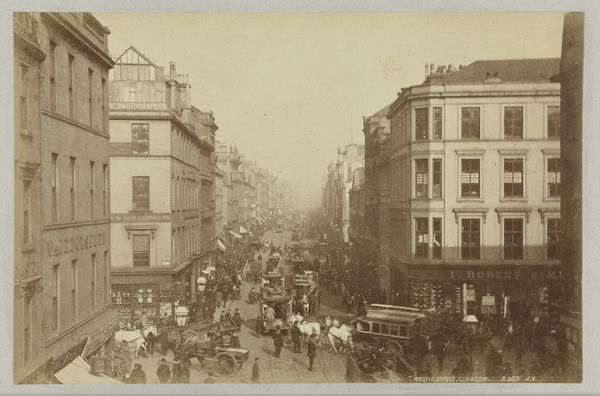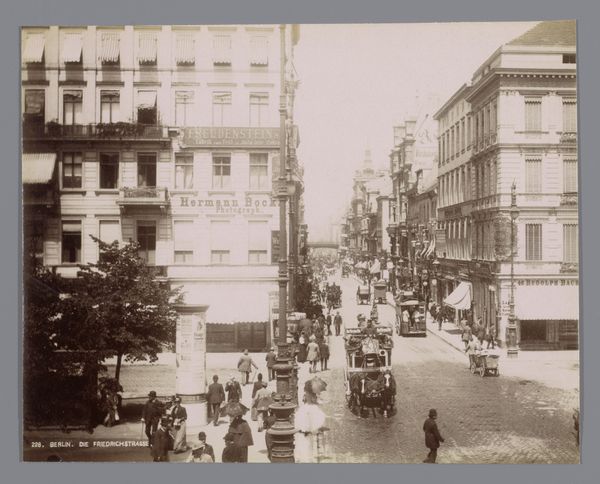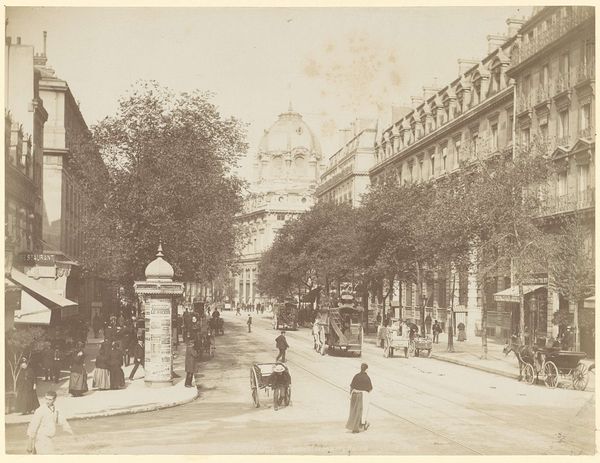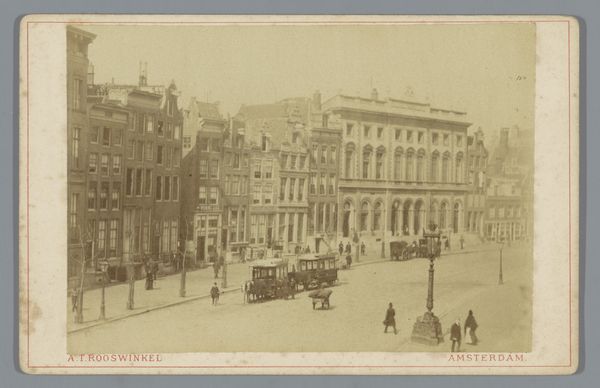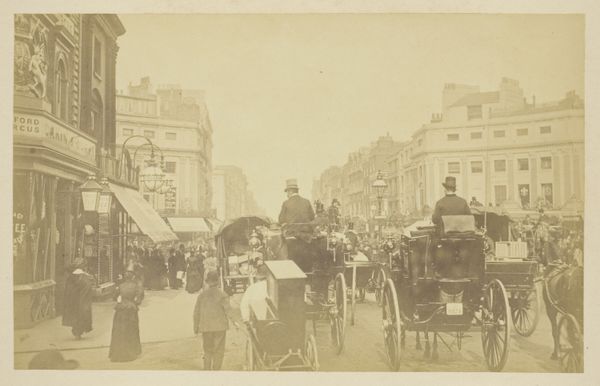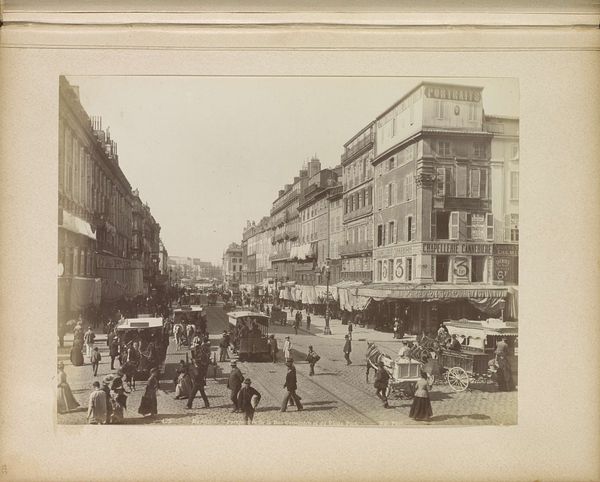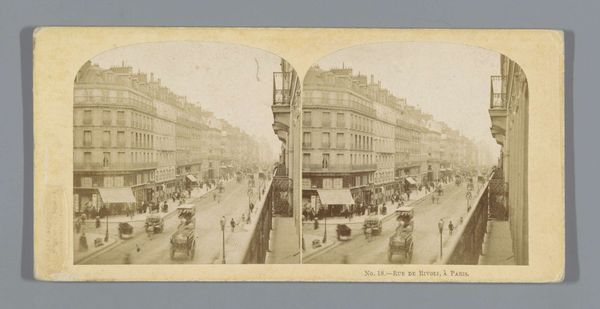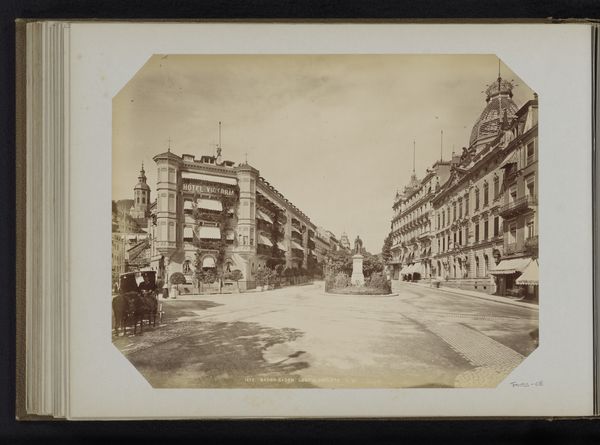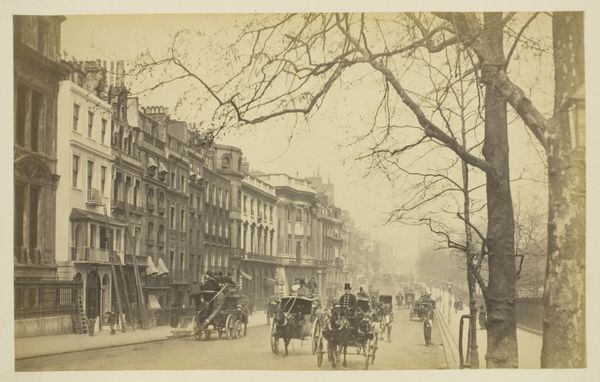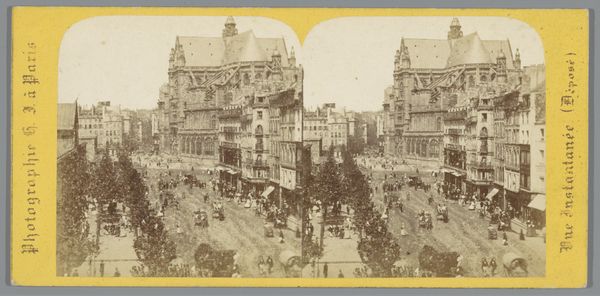
print, photography
#
portrait
#
pictorialism
# print
#
photography
#
cityscape
Dimensions: height 76 mm, width 109 mm, height 242 mm, width 333 mm
Copyright: Rijks Museum: Open Domain
Curator: Let's take a look at Frits Freerks Fontein Fz.'s 1901 print, "Stadsgezicht met trambaan en paard en wagens", which translates to Cityscape with tram rails and horse and wagons. It’s a photograph that utilizes Pictorialist techniques. Editor: It feels so… immediate. You know, like a perfectly captured moment frozen in time. It's amazing how the photographer makes something so quotidian—a street scene, no less—feel so artistic, like a charcoal drawing. The horses and carts make it even more vintage and fascinating. Curator: Absolutely. Pictorialism, prominent then, really sought to elevate photography to the level of fine art. They would often manipulate the print to give it a soft, painterly feel. You see it in the atmospheric blur and the tonal range of the gelatin silver print. Editor: Oh, so it's not just that everything was hazy back then? Though I do get a certain steampunk-y, slightly blurred vibe about it. But you're right. I get the sense that Fontein wasn't trying to simply document Bristol, he was trying to interpret it. Curator: Precisely. Look at how the tram tracks slice across the frame, guiding the viewer's eye. Notice too, the placement of the shops, 'Hatters and Outfitter,' then a Tobacconist: they point to the growth of urban consumer culture. Editor: And they point out that there's so much history in one snapshot! Hats, tobacconists. So specific, and already nearly vanished… Do you think those workers at the hatters knew they were becoming picturesque period actors for future art gallery goers? Curator: That’s a compelling thought! The artist has captured the essence of the age, both materially and experientially, and those anonymous figures animate the social and cultural currents of early 20th-century urban life. Editor: I’m just now realizing, if he chose this angle deliberately, how the buildings seem to converge to form one great big shop window from the past. It's more than a record. It's a stage, and we're watching a lost performance of what life was like back then. Curator: A really marvelous piece for highlighting how technical innovations become integrated in both art practices, and broader cultural practices. Editor: True, and now when I look at the image I get an actual real and emotional response instead of just seeing another black-and-white image!
Comments
No comments
Be the first to comment and join the conversation on the ultimate creative platform.

